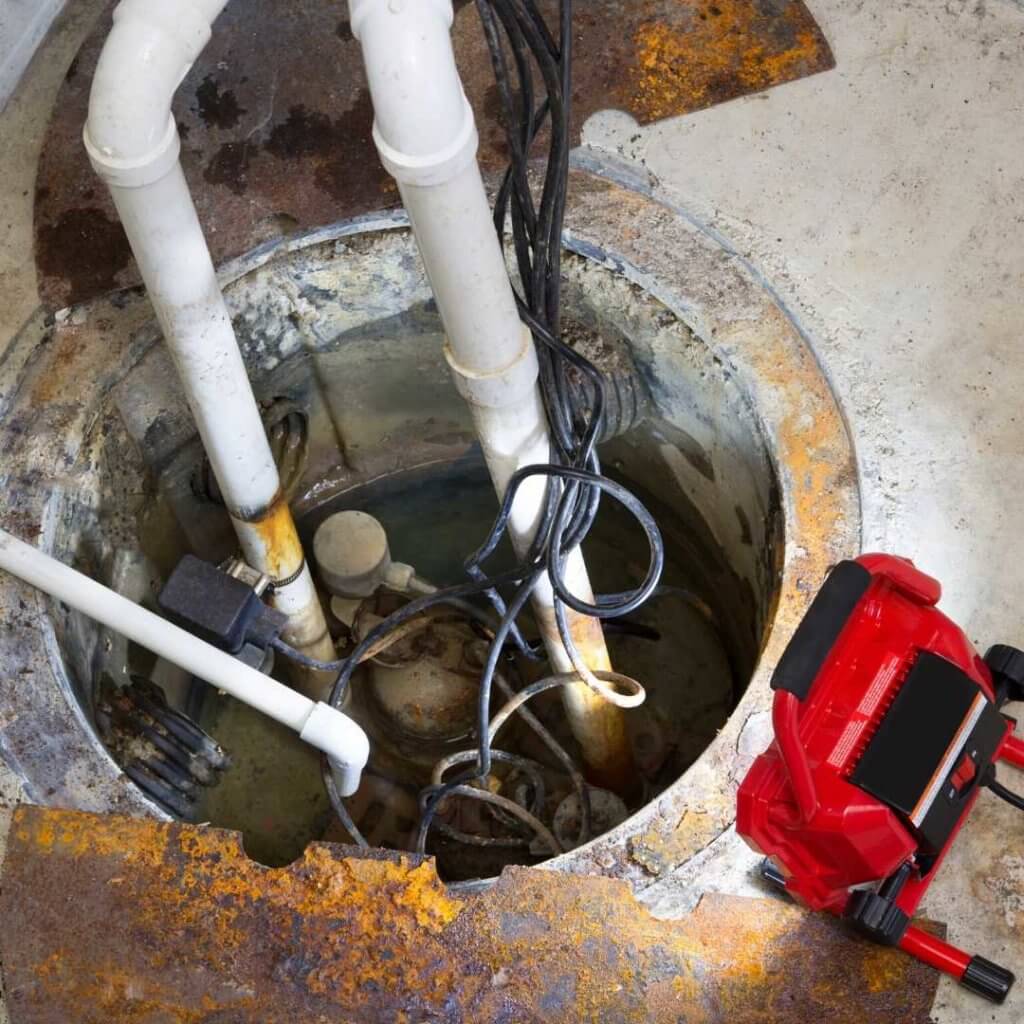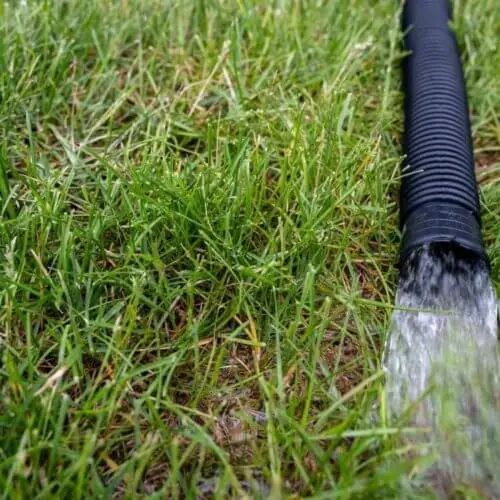Can sump pump freeze in winter?
Your house and its infrastructure can suffer significant damage if the sump pump freezes. Sump pumps are applied to evacuate water from your premises to avoid flooding.
Unfortunately, the sump pump might suffer severe damage from the harsh winter temperatures. As a result, you might have a clogged drain if your sump pump freezes and cannot remove water.
Can sump pump freeze?

Like water pipes, tanks, and discharge lines, sump pumps are prone to freezing, which can result in various issues. A frozen sump pump is terrible news for homeowners. When the discharge line freezes, the pump will have to work harder, leading to overheating and failure in extreme circumstances [1].
What happens when the sump discharge pipe freezes?
A discharge connection from the sump pump to the outside is also run when you install a sump pump [2]. The water is removed from your home using this line. The ice in the drainage line will prevent water from draining if it freezes.
The drained water from the sump pit backs up after the drainage pipe’s end becomes obstructed or blocked by ice. As a result, excess snowmelt and rainwater accumulate within your house and foundation rather than flowing safely away from it.
Your sump pump will run continually yet be unable to remove water if the water cannot be adequately pumped out. As a result, the pump will eventually become overworked and burn out, the area will flood, and you’ll be in the exact circumstance you were attempting to avoid.
Check if your sump pump is frozen

Being proactive is always preferable to being reactive. But doing so requires knowing when something is wrong with your sump pump. Because of the constantly changing weather, your sump pump is prone to many issues. However, your sump pump will continue to operate as it is supposed to if you know the signs of damage and learn how to stop them from happening in the future. What to look for in a damaged sump pump is listed below.
- The cycle of the pump has changed.
A sump pump ought to develop a dependable operating pattern. For example, it automatically turns on when water reaches a particular level in its pit and turns off once it has been pumped out.
Sometimes, a change in the pump cycles can indicate something isn’t right. For instance, it occasionally fails to turn on or run continuously without turning off. Conversely, the pump may appear to function as it should, but it may take longer than usual to complete its task.
Float or switch issues with the pump frequently cause these issues. These tools keep an eye on the water level. They should turn on the pump whenever the water reaches a specific level. When the level drops once more, they should turn it off.
If the float is trapped or broken, the pump will have trouble knowing when to start and stop. For instance, even when there isn’t much water in the pit, the pump may run continuously or cycle on and off repeatedly if the float is stuck in one place.
- The pump makes strange noises.
Sump pumps all create some noise while operating. However, once you’ve heard the pump turn on and off a few times, you grow accustomed to these sounds.
You should keep an eye out for odd noises when the pump is running. There may be a problem if you hear these noises.
For instance, if the volume of your pump suddenly increases significantly, it may have a bearing issue [3]. Likewise, the fan may be broken or jammed if you hear pounding, rattling, squeaking, or grinding noises.
You most likely have an impeller issue if the pump makes odd noises while vibrating. This is because the pump’s impeller draws water in. The object may bend or damage the impeller if it brings in a large or hard piece of debris. If it stumbles, the pump vibrates as a result of the wobble.
- The pump appears rusty
A problematic pump may occasionally function and sound well, but there may be visible symptoms of damage. For instance, you might see a brown stain that resembles rust.
While battery deterioration can occasionally affect pumps, bacterial issues can cause discoloration. Some bacteria feed on the iron in water supplies and produce a rusty residue [4].
This residue has the potential to gel if it accumulates. As a result, the water flow through your pump may be impacted if the gel gets inside. Additionally, it might block up machinery. As a result, the pump can eventually overheat or malfunction.
- The circuit in your pump trips
Sometimes a pump issue is only discovered after something else goes wrong. For instance, something is wrong if your pump consistently trips its electrical circuit when it turns on.
If your pump hasn’t previously experienced any electrical issues, it likely has an internal problem. For instance, it might have a loose or broken wire. Alternatively, the impeller or switch on the pump could be broken or stuck. A circuit can also be tripped by a defective motor attempting to draw too much power .
How to Keep Sump Pump Free from Freezing

There is nothing worse than having plumbing issues during winter because it can lead to expensive repairs. However, maintaining your sump pump discharge line properly this winter requires little maintenance. Here are seven suggestions to avoid a frozen discharge line so that your basement stays dry and your sump pump keeps running.
- Install a sump pump freeze guard
Installing a pump freeze guard in your sump setup is one strategy to stop the pump from freezing. The freeze-guard system permits water to escape from the discharge line. As a result, the basement dries even if a layer of snow or ice covers the outlet pipe because moisture can still run [5].
There would not be any moisture evaporating from the sump pump ice guard when the discharge line thaws. It is because the water will flow naturally along its standard path. There are no switches to turn, hoses to connect, or other tasks the homeowner must perform; everything is automatic.
- Bury the pipe
The sump pump discharge pipe needs to be either stretched out above grade at a downward slope or buried in the yard. The pipe needs to be buried a minimum of 12 centimeters below the frost line (the lowest point below which the soil doesn’t freeze). This is because the pipe typically freezes in the line segment where it touches the ground and at the end of the line where the water disperses.
- Keep the water flowing.
Your plumbing may freeze if there is any standing water. Any water in your sump pump is more likely to freeze if it cannot circulate throughout your home. Your sump pump may buckle under pressure and stop working if it contains frozen water. Make sure the water is running and keep an eye on your plumbing; some sump pumps have settings that may be adjusted if necessary.
- Insulate the area to keep water from coming into contact with cold air.
The best approach to preventing a discharge line from freezing is to insulate it as much as possible. For instance, try burying the pipe deeper underground or adding insulation with hay and a tarp.
- Give the pump a slight incline.
Using gravity is one of the most straightforward techniques to avoid a frozen discharge line. To keep the water flowing, try to have the sump pump lines follow a slope rather than a straight line when planning their placement. For instance, if your home is at a different angle, you can create one.
- Minimize the pump’s workload.
Redirecting some extra water away from the basement is another brilliant approach. It assists in reducing the workload placed on your sump pump, stops it from overworking, and reduces the possibility of a frozen discharge line.
- Increase the buffer between the wastewater area and the sump pump.
Connecting a freeze-resistant line to the discharge hose allows you to route some extra water away from your basement. The freeze-resistant hose must be about 20 feet long to be rigid and prevent water from collecting.
Read Next: Sump Pump Clogged With Sediment
Final words
Maintaining your sump pump is crucial, especially since cleaning out a flooded basement may cost you hundreds of dollars. Nobody wants their basement to flood. If you wish to prepare for the worst this winter, take good care of your plumbing and schedule an inspection with a plumber right away.
Regularly check your sump basin and test the pump to ensure everything is in working order. Make sure that nothing, not even snow or ice, is in the way of your flexible discharge line. Additionally, watch out that your pump doesn’t spray water into your driveway or sidewalk since this can lead to dangerous ice formation.
Read Next: Best Generator For Sump Pump

Michael Davis is a heating & plumbing expert who currently works as independent contractor in SC. He also writes for Plumbertip.
For almost 10 years he worked on various plumbing tasks across South Carolina.



